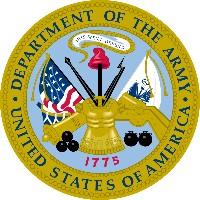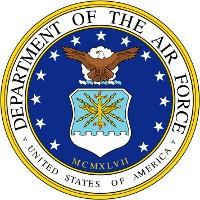|
Private Bruce H. Bracey
United States Army (1944-1945)


Bruce Hirth Bracey was born on February 3,
1917 to Bruce B. and Pauline Bracey of 2615 Plainview Avenue. He was their first
child, followed five years later by sister Mary Louise. Bruce was a graduate of
Brookline Elementary School and South Hills High School.
After high school, Bruce, a solicitor by
trade, met and married Rosemary Schulken. The couple had two children, James
Warren Bracey and Sharon Louise Bracey. Bruce was drafted into the Army on
January 22, 1944 and reported for bootcamp on February 2.
After his initial training was complete,
Bruce was assigned as a replacement in the 180th Infantry Regiment of the 45th
"Thunderbird" Division, a veteran unit of the U.S. Seventh Army that had already
seen action during the North Africa, Sicily and Italian Campaigns.
  
Private Bruce H. Bracey sailed from
America on July 1, 1944 to join up with the unit in North Africa to prepare
for the upcoming invasion of Southern France. The 45th Infantry Division
participated in its fourth amphibious assault landing during Operation Dragoon on August 15, 1944, at St. Maxime.
The 45th Infantry Division landed the
157th and 180th regimental combat teams and captured the heights of the Chaines
de Mar before meeting with the 1st Special Service Force. The German Army,
reeling from the Battle of Normandy, in which it had suffered a major defeat,
pulled back after a short fight, part of an overall German withdrawal to the
east following the landings.

The 45th Division disembarks on the beach at
St. Maxime in Southern France on August 15, 1944.
Soldiers of the 180th Infantry Regiment
engaged the dispersed forces of German Army Group G, suffering very few casualties.
The U.S. Seventh Army, along with Free French forces, were able to advance north
quickly. By September 12, the Seventh Army linked up with Lieutenant General
George S. Patton's U.S. Third Army, advancing from Normandy, joining the two
forces at Dijon.
Against slight opposition, the regiment
spearheaded the drive for the Belfort Gap. The 180th then advanced on the fortress
city of Epinal. Divided in two by the fast flowing Moselle River, Epinal was
strongly defended by three battalions of infantry, reinforced by artillery,
mortars and dual-purpose anti-aircraft guns. All approaches to the river were
heavily mined, booby-trapped and pre-targeted for the artillery. The bridges had
been demolished.

The path of the 180th Infantry Regiment
from the invasion beach to the German frontier.
Despite determined resistance and the
formidable river obstacle, the 180th Regiment seized the town on September 24.
The enemy abandoned large stores of equipment, and beat a hasty retreat towards
the German frontier. The division was then reassigned to V Corps, under the
command of Major General Leonard T. Gerow, for its next advance.
On September 30 the Thunderbirds moved
on the heavily wooded Vosges Mountains, the last natural obstacle before
Germany. For over a month, the regiment met fanatical resistance, compounded by
inclement weather. Nevertheless, the Mortagne River was crossed on October 23
and the 180th fought up to the outskirts of Raon l'Etape. After eighty-six
consecutive days of combat, the regiment was relieved on November 9.

Soldiers of the 45th Division rest and read
mail during a pleasant lull in the action.
After a fifteen day rest, the regiment
was again committed against the enemy. Passing through the Saverne Gap, the 180th
protected the northern flank of a general advance towards Strassburg. Once that
city was taken the attack proceeded north, and on November 30, Pfaffenhoffen was
captured, the western gateway to the key city of Hagenau.
The regiment continued, capturing several
Alsacian towns before crossing the German border on December 15. Company L of the
180th was the first 7th Army unit to enter Germany. From then until January 2,
the regiment battled the enemy in their Siegfied Line defenses.

One of many river crossings made by the 180th
Regiment on their way towards Germany.
In the meantime, a powerful German
counterattack in support of the Ardennes Offensive,
had broken through the American line south of Bitche, and threatened to push through
to the Savern Gap. On January 2, the regiment was ordered to withdraw from Germany
and to proceed to a staging area north of Erkartsweiller.
In snow and sub-zero temperatures, the
regiment counterattacked two days later and recaptured several key villages to help
form a strong allied southern defensive front along the Ardennes bulge. It was during
this critical time, against an increasingly desperate foe that, on January 11, 1945,
Private Bruce Hirth Bracey was killed in action. Another Gold Star would soon be
hung on the window of a Brookline home.

After Private Bracey's death, the 45th
Division continued to take the fight to the enemy. After a brief period away from
the front in February, the men smashed through the SiegFried Line on March 17 and
crossed the Rhine River nine days later. By April 20 they had captured the town of
major German city Nuremberg.
The Division crossed the Danube River a
week later and liberated the concentration camp at Dachau on on April 29. After
that it was on to Munich and then V-E Day on May 7, 1945. The soldiers of the
45th "Thunderbird" Division returned to the United States in September and the
unit was deactivated on December 7, 1945.
Looking back, the 45th Infantry Division
endured over 500 days in combat, suffering 62,641 casualties during the war, enough
to replace its original strength three times over. Along the way, Thunderbirds took
103,367 enemy troops prisoner and inflicted untold enemy casualties.
Even General George S. Patton had high praise
for the Division, saying that it was one of only three divisions in the Army that
performed like a veteran unit from its first day in action. Addressing a group of
Thunderbirds, Patton said: I hope you know how good you are, for everyone else
does. You are magnificent.

The Pittsburgh Press reported Private
Bracey's death on March 12, 1945. By that time a Gold Star had appeared on the
window of the Bracey home at 2615 Plainview Avenue and the neighborhood of
Brookline knew that another son had been lost in the global conflict. Worse,
Bruce's wife Rosemary was now a widow and their two children left without a
father.
Private Bruce Hirth Bracey's body is
interred at the Epinal American Cemetery and Memorial, located in Epinal, Department des Vosges,
Lorraine, France.

* Written by Clint Burton:
March 6, 2019 *
The Brookline
War Memorial

Listed below are
many of the sons of Brookline who gave their
lives to preserve freedom and contain aggression during
World War I, World War II, Korea and Vietnam.
It is foolish and wrong to mourn the men who died.
Rather, we should thank God that such men lived.
General George S. Patton
   
  

World War I
(1917-1919)

The World War I Memorial -
Washington D.C.
<> <>
<> <> <> <> <> <> <> <>
<> <> <> <> <> <> <> <>
<> <> <> <> <> <> <> <>
<> <> <> <> <> <>
World War II
(1941-1945)
|

Alm, William H.
Pioneer Avenue
Army
 Details Details |

Arensberg, Roy T.
Fernhill Avenue
Army
 Details Details |
|

Bracey, Bruce H.
Plainview Avenue
Army
 Details Details |

Brickley, Edward G.
Woodward Avenue
Army
 Details Details |
|

Capogreca, James J.
Merrick Avenue
Navy
 Details Details |

Copeland, Clarence R.
Creedmoor Avenue
Navy
 Details Details |
|

Cullison, Thomas J.
Birtley Avenue
Army
 Details Details |

Dempsey, Howard F.
Berkshire Avenue
Army
 Details Details |
|

Dempsey, Walter F.
Milan Avenue
Navy
 Details Details |

Diegelman, Edward R. Jr
Norwich Avenue
Army
 Details Details |
|

Dornetto, Frank P.
Jacob Street
Navy
 Details Details |

Doyle, John F Jr.
Eben Street
Navy
 Details Details |
|

Fagan, Gerald B.
Woodbourne Avenue
Army
 Details Details |

Falk, Harold E.
Pioneer Avenue
Army
 Details Details |
|

Fehring, Robert M.
Fernhill Avenue
Army
 Details Details |

Gmuca, Joseph J.
Brookline Boulevard
Army
 Details Details |
|

Heil, Robert F.
Bayridge Avenue
Army
 Details Details |

Hynes, Richard E.
Waddington Avenue
Army
 Details Details |
|

Kestler, Paul C.
Creedmoor Avenue
Navy
 Details Details |

Ketters, Robert C.
Berkshire Avenue
Army
 Details Details |
|

Mahoney, Michael J.
Oakridge Street
Army
 Details Details |

Majestic, Arthur B.
Starkamp Avenue
Army
 Details Details |
|

Mayberry, Alexander G.
Breining Street
Army
 Details Details |

Mazza, John
Alwyn Street
Army
 Details Details |
|

McCann, Robert F.
Edgebrook Avenue
Navy
 Details Details |

McFarland, Hugh R.
McNeilly Road
Army
 Details Details |
|

Meisner, Walter F.
Berwin Avenue
Merchant Marine
 Details Details |

Miller, William J.
Norwich Avenue
Army
 Details Details |
|

Napier, Edward J.
Brookline Boulevard
Army
 Details Details |

Nicholson, John D.
Woodbourne Avenue
Army
 Details Details |
|

O'Day, John R.
Creedmoor Avenue
Navy
 Details Details |

Orient, Andrew D.
Fordham Avenue
Army
 Details Details |
|

Pisiecki, Raymond A.
Wolford Avenue
Army
 Details Details |

Reeves, Alfred M.
Brookline Boulevard
Army
 Details Details |
|

Reitmeyer, John P.
Bellaire Avenue
Navy
 Details Details |

Rhing, Vern M.
Norwich Avenue
Army
 Details Details |
|

Ruane, Roy J.
Berkshire Avenue
USMC
 Details Details |

Shannon, Harry C.
Midland Street
Army
 Details Details |
|

Shannon, Jack E.
Midland Street
USMC
 Details Details |

Simpson, James D.
Woodbourne Avenue
Army
 Details Details |
|

Spack, Harry
Linial Avenue
Army
 Details Details |

Tobin, Paul M.
Woodbourne Avenue
Army
 Details Details |
|

Vierling, Howard F.
Fordham Avenue
Army
 Details Details |

Wagner, Ralph G.
Shawhan Avenue
Army
 Details Details |
|

Wentz, Walter L. Jr
Woodbourne Avenue
Army
 Details Details |

Zeiler, Harold V.
West Liberty Avenue
Army
 Details Details |

The World War II Memorial -
Washington D.C.
<> <>
<> <> <> <> <> <> <> <>
<> <> <> <> <> <> <> <>
<> <> <> <> <> <> <> <>
<> <> <> <> <> <>
Korean War
(1950-1953)

Korean War Memorial -
Washington D.C.
<> <>
<> <> <> <> <> <> <> <>
<> <> <> <> <> <> <> <>
<> <> <> <> <> <> <> <>
<> <> <> <> <> <>
Vietnam War
(1965-1973)

Vietnam War Memorial -
Washington D.C.
The Brookline
Monument - The Cannon

<Brookline
War Memorial> <> <Brookline
History> |